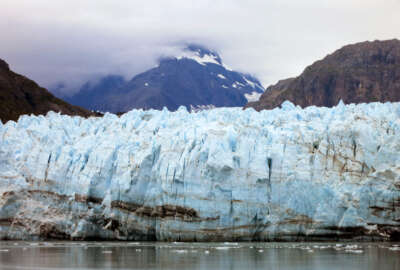
A room full of Republicans just addressed climate change, here’s why
The House Armed Services Committee passed an amendment recognizing climate change as a threat to national security. The amendment tells the defense secretary to...
Rep. Jim Langevin (D-R.I.) did something this week that many Democrats in Congress have been unable to do.
He got Republicans to act on climate change.
With an amendment to the House 2018 defense authorization bill, Langevin got his Republican and Democratic colleagues to address the national security implications of rising sea levels, desertification and other nasty effects global warming.
The amendment, which made it into the final version of the bill, explicitly states that climate change is a direct threat to the national security of the United States.
It requires the defense secretary to make a list of the 10 military installations most threatened by climate change and to explain how threats to those installations can be mitigated.
The amendment also requires the defense secretary to address issues combatant commanders will face over the next 20 years due to climate change.
The provision states “climate change is impacting areas of the world where the United States armed forces are operating today and where strategic implications for future conflict exist. We all know climate change is affecting the world in so many ways. It’s affecting the United States and its economy. Very often we talk about climate change from an environmental or economic perspective, but we really don’t talk about it as a national security issue. Now it is a national security issue and it’s front and center,” Langevin told Federal News Radio.
Military leaders have been fretting over climate change for years, especially in the installations realm.
The Defense Department is revising its unified facilities code to adjust to climate change issues.
In addition, the Navy is writing into its policies and construction code that all new buildings take into account the possibility of sea level rise, Deputy Chief of Naval Operations for Fleet Readiness and Logistics Vice. Adm. Dixon Smith told Congress this month.
“We are taking sea-level rise into consideration in our projects. We started this a few years ago as we realized it is changing. So now whenever we design any project that’s within the 100-year flood plain, we look at it and analyze, ‘Do we need to make adjustments to a standard project to accommodate for [sea level rise]?’” said Smith said.
Dixon said the Navy’s fueling depot on Craney Island in Norfolk, Virginia was built 10 feet higher to account for climate change effects.
“Cyber buildings being built over at the Naval Academy, HVAC systems, utility systems are not going on the ground floor. They’re all safe from flooding. In that building, we’ve designed flood barriers on the first floor,” Smith said.
The Air Force is also taking precautions after coastal zone flooding threatened Langley Air Force Base in Virginia and Eglin Air Force Base in Florida.
Langevin said he is worried about some of the installations in Rhode Island.
“We have a National Guard base that is right on the coast and although we haven’t experienced any significant, mission-critical effects of climate change yet, it is a concern that we have. You can see in time down the road, as ocean waters rise, because the waters are warming, that it very well will have an impact on that base and for other areas of Rhode Island where we are already experiencing significant problems from storm surge and erosion and other effects of significant storms,” Langevin said.
Not only does climate change threaten bases, but it has the potential to create new areas of conflict over resources and open new waterways.
Defense Secretary James Mattis said in the past that climate change is impacting U.S. security through rising sea levels, expansion of access to the Arctic and increased desertification.
Last January, the Pentagon required the DoD components to assess the effects of climate change on the department’s mission and to take into account those effects when developing plans and implementing them.
“The DoD must be able to adapt current and future operations to address the impacts of climate change in order to maintain an effective and efficient U.S. military,” the order stated.
The department also released a study on the risks of a changing climate.
“DoD recognizes the reality of climate change and the significant risk it poses to U.S. interests globally,” the study stated. It is “clear that climate change is an urgent and growing threat to our national security, contributing to increased natural disasters, refugee flows and conflicts over basic resources such as food and water. These impacts are already occurring, and the scope, scale and intensity of these impacts are projected to increase over time.”
The study outlines some measures the military was taking to prepare for climate change, such as creating a larger presence in the Arctic, where more land and sea are exposed as the polar ice caps melt.
Former military officials are also pushing DoD to take climate change seriously.
The Climate and Security Advisory Group released recommendations last fall calling on the president to “comprehensively address the security risks of climate change at all levels of national security planning.”
The group was made up of 43 U.S. based military and intelligence community experts.
Copyright © 2025 Federal News Network. All rights reserved. This website is not intended for users located within the European Economic Area.
Scott Maucione is a defense reporter for Federal News Network and reports on human capital, workforce and the Defense Department at-large.
Follow @smaucioneWFED




